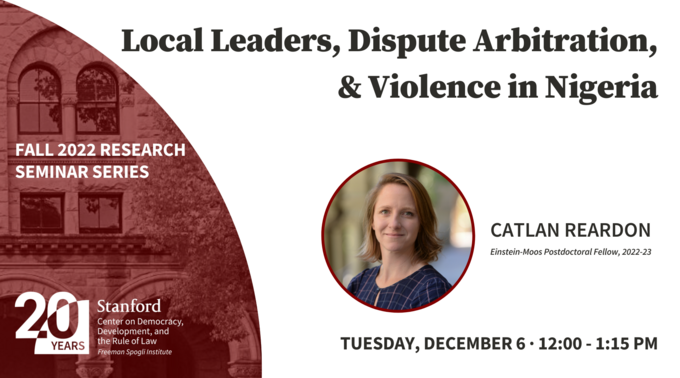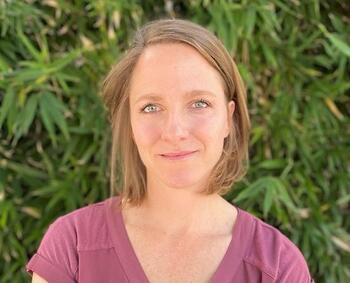A recent study has found small modular reactors (SMRs) may actually produce more radioactive waste than larger conventional nuclear power reactors has drawn reaction from vendors and supporters of SMRs.
Small modular reactors are often described as nuclear energy’s future. Nuclear power can generate electricity with limited greenhouse gas emissions, but large reactor plants are expensive, and they also create radioactive waste that pose a threat to people and the environment for hundreds of thousands of years. In an attempt to address this challenge, the nuclear industry is developing smaller reactors that industry analysts say will be cheaper, safer and yield less radioactive waste than the larger ones.
The study on SMRs noted above was conducted by Lindsay Krall, lead author and a former MacArthur Postdoctoral Fellow at the Center for International Security and Cooperation (CISAC), and co-authors Allison Macfarlane, professor and director of the School of Public Policy and Global Affairs at the University of British Columbia, and Rodney Ewing, the Frank Stanton Professor in Nuclear Security at Stanford and co-director of CISAC.
Summing up their findings, Krall wrote in the study, “Our results show that most small modular reactor (SMR) designs will actually increase the volume of nuclear waste in need of management and disposal, by factors of 2 to 30 per unit of energy generated for the reactors in our case study. These findings stand in sharp contrast to the cost and waste reduction benefits that advocates have claimed for advanced nuclear technologies.”
In a recent interview, Krall, Macfarlane and Ewing elaborated on the fuller context of and industry reaction to their study:
What have you learned from publishing this research?
Lindsay Krall: I would like to emphasize the positive responses to this article, particularly among experts in Europe’s nuclear waste management and disposal community, who found the results surprising and very important. It appears that the article has swiftly brought the discussion of SMR waste issues (or lack thereof) to the forefront and attracted the attention of decision- and policy-makers in certain European countries. This makes me hopeful that the results of this study and follow-up research will have a real-world impact and improve the viability of nuclear energy, at least in Europe.
Nevertheless, it is also apparent that the scarcity of practical expertise in nuclear waste management in the U.S., exacerbated by the 12 year-long absence of a waste management and disposal strategy, may make it difficult for the results of the study to reach policy- and decision-makers here.
Did your research involve contacting NuScale for information or clarifications regarding NuScale fuel burnup. If yes or no, please describe why?
Lindsay Krall: As part of the background research to the study, I attended advanced nuclear events around Washington, D.C., where I discussed the study with vendors, NGOs, university researchers, national laboratories, and the Nuclear Regulatory Commission (NRC). The reactor certification application that NuScale had already submitted to the NRC contained much of the information needed to estimate and characterize the waste streams for their reactor, with the exception of the fuel burnup, which was redacted. In an attempt to obtain the fuel burnup, I filed a Freedom of Information Act request with the NRC, but the burnup was not released. Therefore, I calculated the burnup as described in the appendix that was published with the article.
Why was the 160 MWth NuScale iPWR design chosen for study?
Lindsay Krall: The design certification application submitted to and reviewed by the NRC provided a comprehensive, high quality dataset for the iPWR analysis. In general, the analysis aimed to assess SMR designs that are undergoing or have undergone the regulatory approval process, rather than hypothetical future SMR designs that might be achievable provided significant technical or policy breakthroughs. Although the industry tends to market the benefits of SMRs around the latter “ideal” designs, these are not as “technologically ready” as the certified designs. Therefore, SMR vendors have levied some unfair criticism against this study, because the article and its accompanying appendix clearly state our preference for NRC-reviewed designs.
Please describe the challenges of completing your analysis in light of the lack of access to relevant design specifications?
Allison Macfarlane: It’s essential that quantitative analyses of waste production and management for new reactor designs be completed. Our paper was an attempt to do so in an open way, to provide the beginning of the discussion of this issue. Availability of quality data to do such analyses, especially by independent academic researchers, such as ourselves, will improve public confidence in small modular reactors.
What is your response to NuScale’s claim that its 250-MWt design does not produce more spent nuclear fuel than the small quantities typically observed in the existing light-water reactor fleet?
Rod Ewing: The fundamental point is that the information on the design and operational parameters for the 250MWth have not yet been submitted to the Nuclear Regulatory Commission. Our understanding is that the application will be submitted in December of this year. When the required data are available, then it will be possible to do the analysis.
What responsibility do the vendors, who are proposing and receiving federal support to develop advanced reactors, have in addressing concerns about the waste and conducting research that can be reviewed in open literature settings?
Allison Macfarlane: Vendors should have first-hand knowledge of all issues associated with their reactor designs. These include waste production, of course (and all wastes – low-, intermediate-, and high-level), as well as fuel supply issues, supply chain issues, awareness of security challenges, and proliferation hazards (one assumes they understand safety issues already). Many of these designers are early in their progress towards one day making their reactors a reality and so, perhaps, the blanks will be filled. It will be important to do so transparently and in dialogue with other experts and the public to ensure public support of this technology.
What were your most significant findings in this research that people and the nuclear industry should be aware of?
Rod Ewing: The most important point of our paper is that with different reactor designs with new and more complex fuels and coolants, there will be an impact on the approaches that are required for the safe, final disposal of fuels and activated materials. Of particular significance is that at this time the United States has no long-term strategy for dealing with its highly radioactive waste streams, even from its present reactor fleet.
What have you learned from the reaction to this paper?
Rod Ewing: That many of the negative comments have been misplaced in that our paper has been taken as being anti-nuclear. Our paper had a simple purpose, that is to understand the implications of SMRs for the back-end of the nuclear fuel cycle, particularly for the permanent and safe disposal of nuclear wastes from SMRs. Although the question is a reasonable and an obvious question to ask, I now understand that it was an unwelcomed question to pose. We have been criticized for not seeing and acknowledging the bigger picture – the role of nuclear power in reducing greenhouse gas emissions – and instead focusing only on the nuclear waste issue. I see no reason why a paper about nuclear waste and disposal should also be a cheerleader for nuclear power. These are really two separate issues.
Another surprise was the lack of a technical response. Letters were written to the editor of the Proceedings of the National Academy of Sciences (which published the study), but these letters were not copied to the authors. Letters appeared on the web, but were not copied to the authors. This was a public relations response not a technical, scientific response. Public relations may win the day, but I do not think that this builds public confidence in nuclear power. The public has to see that important issues are discussed openly and in a way that converges on solutions rather than polarized positions.
There was one important, bright spot during the past week. Jose Reyes (chief technology officer and co-founder) of NuScale published his letter to the editor of PNAS in the Nuclear Newswire of the American Nuclear Society. We prepared a response to Dr. Reyes and submitted it to Nuclear Newswire, and it was accepted and published promptly on June 13. This effort to foster discussion certainly reflects well on the American Nuclear Society.
Any other points?
Allison Macfarlane: I would like to emphasize a point Lindsay Krall made: no country has an operating geologic repository for spent nuclear fuel yet. A few countries are moving in that direction, but the U.S. has fallen to the back of the pack in this regard. The U.S. is at a stalemate with regards to developing a deep geologic repository for high-level nuclear waste and is largely uninterested in solving this problem. Since a waste issue essentially brought us the climate catastrophe, is it responsible to ignore the waste problem from another energy source?








